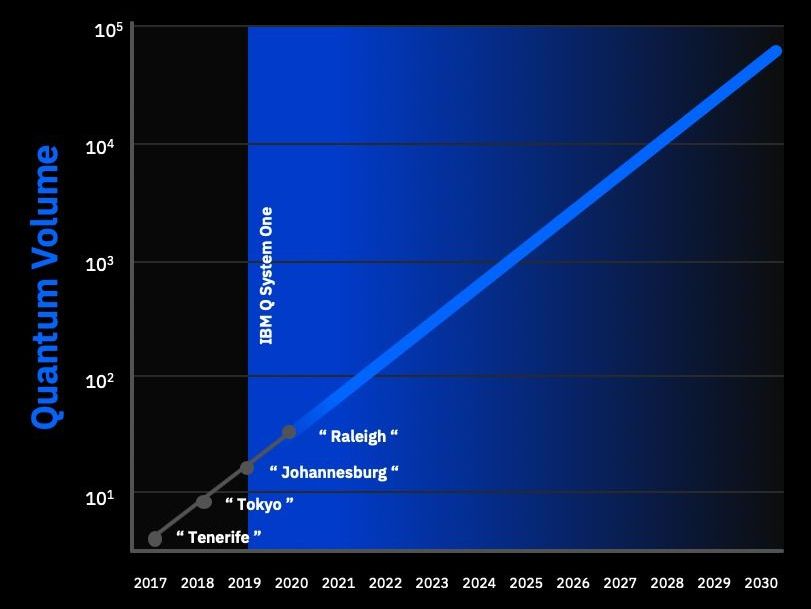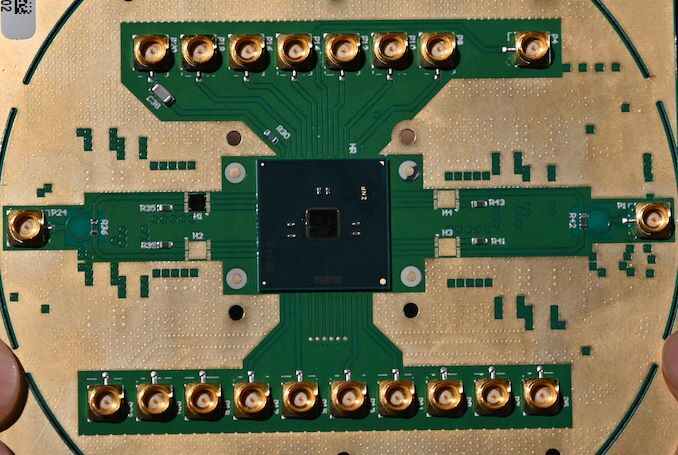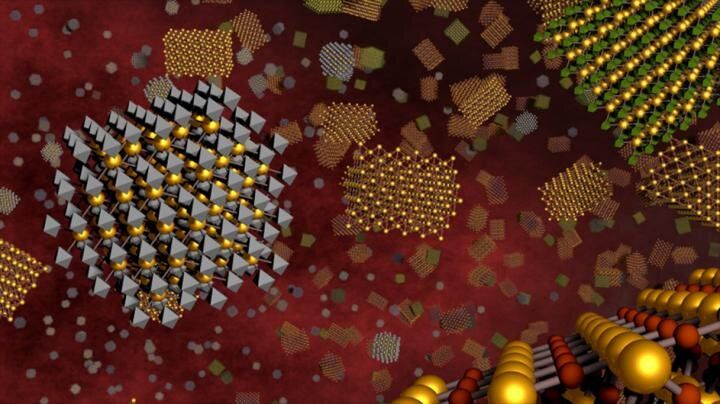China has connected the world’s first portable ground station for quantum communication to the Mozi satellite, and has plans to launch another quantum satellite soon.


Particles can carry information securely because intercepting them would alter the message and alert the receiver or sender.

IBM announced a new 28-qubit quantum system backend, Raleigh and achieved a system demonstrating Quantum Volume of 32. This is double the quantum volume of 16 of a prior IBM system.
Quantum Volume (QV) is a hardware-agnostic metric that we defined to measure the performance of a real quantum computer. Each system IBM develop brings us along a path where complex problems will be more efficiently addressed by quantum computing; therefore, the need for system benchmarks is crucial, and simply counting qubits is not enough. Quantum Volume takes into account the number of qubits, connectivity, and gate and measurement errors. Material improvements to underlying physical hardware, such as increases in coherence times, reduction of device crosstalk, and software circuit compiler efficiency, can point to measurable progress in Quantum Volume, as long as all improvements happen at a similar pace.

Optically levitated nanosphere shows definitive signature of its quantum ground state of motion.
Picture a marble rolling around inside a bowl. The motion of the marble represents its center-of-mass temperature, a quantity distinct from the object’s physical temperature. Now replace the marble with a levitated nanosphere and the bowl with an optical trap, and you have the experiment used by Felix Tebbenjohanns and colleagues at the Swiss Federal Institute of Technology (ETH), Zurich, to reduce a levitated nanoparticle’s center-of-mass temperature to close to its quantum ground state. The experimental signature showing that the nanosphere had entered the quantum regime had, until now, been seen only in mechanically clamped systems coupled to optical cavities.

A 2017 report of the discovery of a particular kind of Majorana fermion — the chiral Majorana fermion, referred to as the “angel particle” — is likely a false alarm, according to new research. Majorana fermions are enigmatic particles that act as their own antiparticle and were first hypothesized to exist in 1937. They are of immense interest to physicists because their unique properties could allow them to be used in the construction of a topological quantum computer.
A team of physicists at Penn State and the University of Wurzburg in Germany led by Cui-Zu Chang, an assistant professor of physics at Penn State studied over three dozen devices similar to the one used to produce the angel particle in the 2017 report. They found that the feature that was claimed to be the manifestation of the angel particle was unlikely to be induced by the existence of the angel particle. A paper describing the research appears on January 3, 2020 in the journal Science.
“When the Italian physicist Ettore Majorana predicted the possibility of a new fundamental particle which is its own antiparticle, little could he have envisioned the long-lasting implications of his imaginative idea.”


Nothing lasts forever. Humans, planets, stars, galaxies, maybe even the Universe itself, everything has an expiration date. But things in the quantum realm don’t always follow the rules. Scientists have found that quasiparticles in quantum systems could be effectively immortal.
That doesn’t mean they don’t decay, which is reassuring. But once these quasiparticles have decayed, they are able to reorganise themselves back into existence, possibly ad infinitum.
This seemingly flies right in the face of the second law of thermodynamics, which asserts that entropy in an isolated system can only move in an increasing direction: things can only break down, not build back up again.
Clusters composed of a few atoms tend to be spherical. They are usually organized in shells of atoms around a central atom. This is the case for many elements, but not for gold! Experiments and advanced computations have shown that freestanding clusters of twenty gold atoms take on a pyramidal shape. They have a triangular ground plane made up of ten neatly arranged atoms, with additional triangles of six and three atoms, topped by a single atom.
The remarkable tetrahedral structure has now been imaged for the first time with a scanning tunnelling microscope. This high-tech microscope can visualise single atoms. It operates at extremely low temperatures (269 degrees below zero) and uses quantum tunnelling of an electrical current from a sharp scanning metallic tip through the cluster and into the support. Quantum tunnelling is a process where electrical current flows between two conductors without any physical contact between them.
The researchers used intense plasmas in a complex vacuum chamber setup to sputter gold atoms from a macroscopic piece of gold. “Part of the sputtered atoms grow together to small particles of a few up to a few tens of atoms, due to a process comparable with condensation of water molecules to droplets,” says Zhe Li, the main author of the paper, currently at the Harbin Institute of Technology, Shenzhen. “We selected a beam of clusters consisting of exactly twenty gold atoms. We landed these species with one of the triangular facets onto a substrate covered with a very thin layer of kitchen salt (NaCl), precisely three atom layers thick.”
The study also revealed the peculiar electronic structure of the small gold pyramid. Similar to noble gas atoms or aromatic molecules, the cluster only has completely filled electron orbitals, which makes them much less reactive than clusters with one or a few atoms more or less.
Gold clusters ranging from a few to several dozens of atoms in size are known to possess remarkable properties.
Freestanding clusters of twenty gold atoms take the shape of a pyramid, researchers discovered. This is in contrast with most elements, which organize themselves by forming shells around one central atom.


Researchers at Columbia University and University of California, San Diego, have introduced a novel “multi-messenger” approach to quantum physics that signifies a technological leap in how scientists can explore quantum materials.
The findings appear in a recent article published in Nature Materials, led by A. S. McLeod, postdoctoral researcher, Columbia Nano Initiative, with co-authors Dmitri Basov and A. J. Millis at Columbia and R.A. Averitt at UC San Diego.
“We have brought a technique from the inter-galactic scale down to the realm of the ultra-small,” said Basov, Higgins Professor of Physics and Director of the Energy Frontier Research Center at Columbia. Equipped with multi-modal nanoscience tools we can now routinely go places no one thought would be possible as recently as five years ago.”